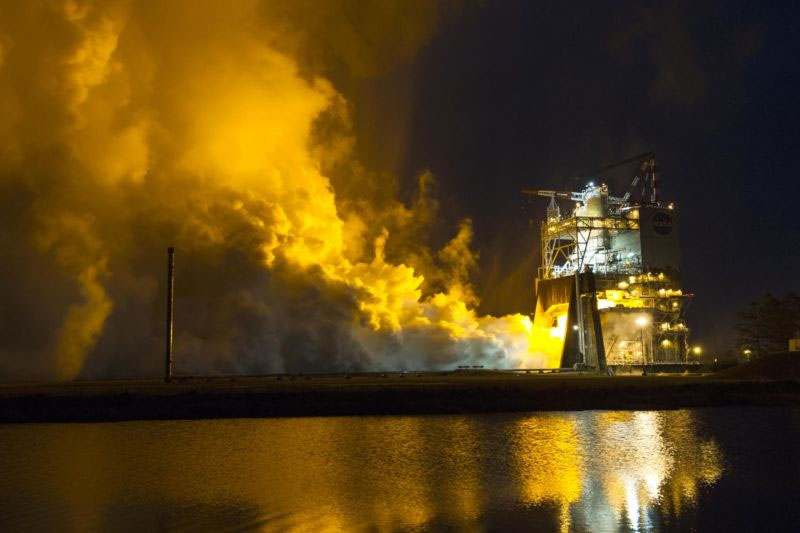Another report finds NASA has burned through a revolting measure of cash on SLS drive

A free report distributed Thursday contained disturbing discoveries about the cash spent by the office on impetus for the Space Send off Framework rocket. Also, the report by NASA Examiner General Paul Martin cautions that on the off chance that these expenses are not controlled, it could risk intends to get back to the Moon.
Obtusely, that’s what martin composed on the off chance that the organization doesn’t get control over spending, “NASA and its agreements will keep on surpassing arranged cost and timetable, bringing about a decreased accessibility of assets, deferred dispatches, and the disintegration of the public’s confidence in the organization’s capacity to mindfully spend citizen cash and meet mission objectives and targets — including returning people securely to the Moon.”
The 50-page report dissected agreements that NASA has given to Aerojet Rocketdyne, for RS-25 primary motors, and to Northrop Grumman, for strong rocket promoters. The motors and sponsors power the principal phase of the Space Send off Framework rocket, which made an effective presentation trip in November 2022. The rocket will send off space travelers for the Artemis missions to the Moon.
Huge amount of cash
The report tracked down that endeavors to restore RS-25 motors, make new ones, and produce strong rocket promoters for the underlying Artemis missions have come about in about $6 billion in cost increments and over six years in plan delays contrasted with NASA’s unique projections.
To place this into point of view, Martin is discussing the expense increments, not the all out cost of the motors and promoters. This implies that invades for the impetus arrangement of the SLS rocket alone are costing the space organization comparably much as it will spend on creating two reusable lunar landers — SpaceX’s Starship and Blue Beginning’s Blue Moon.
The main distinction is the contracting technique, and Martin utilizes — though in regulatory terms — cruel language for NASA’s decision of cost-in addition to contracting. Cost-in addition to contracts are planned to be utilized in exploratory and state of the art innovation programs, for example, the development of the James Webb Space Telescope. However, for this situation, Aerojet was changing motors that had flown on various occasions on the space transport program; and Northrop was adjusting promoters that were also utilized commonly.
“The office’s dependence on cost-in addition to grants builds its monetary gamble,” Martin composed. “In our judgment, NASA has utilized cost-in addition to contracting structures for its SLS supporter and motor agreements to a more noteworthy degree than justified. Albeit the SLS is another vehicle, its legacy promoters and RS-25 motors are deep rooted.”
Cost-in addition to contracts pay the beneficiary the aggregate sum of their costs in addition to a charge. This is as opposed to the fixed-cost agreements NASA has given SpaceX and Blue Beginning for landers, the plan of which is substantially more exploratory and state of the art in nature than reusing space transport equipment.
The new report likewise disagrees with the expenses granted as a feature of the impetus contracts. For instance, despite the fact that Aerojet conveyed just five of 16 of the revamped RS-25 rocket motors toward the finish of its agreement, it was evaluated “generally excellent” by the space organization for this disappointing work.
Expensive motors
There are other head-scratching issues raised by the report. For instance, the ongoing expense of assembling another RS-25 fundamental motor — which will be utilized for the Artemis V mission and ahead — is about $100 million. NASA and Aerojet are attempting to accomplish a 30 percent cost reserve funds before this decade’s over, carrying the expense down to $70.5 million.
Notwithstanding, in projecting these reserve funds, Martin noticed that NASA failed to incorporate a few expenses: “While computing the complete expense of the new RS-25 motors, NASA and Aerojet are just including material, designing help, and contact work (involved work exertion), while project the executives and above costs are barred.” Who knows, perhaps Aerojet’s directors will work free of charge for a couple of years.
Contrasted with the confidential area, in any event, getting the expense of a RS-25 motor down to $70.5 million is a ridiculously exorbitant cost. Blue Beginning makes motors of practically identical power and size, the BE-4, for under $20 million. Also, SpaceX is looking to push the correspondingly strong Raptor rocket motor costs even lower, to under $1 million for each motor.
In view of every one of the new information in his most recent report, Martin said his office has needed to reconsider its gauge of the complete expense of a Space Framework Send off, comprehensive of ground frameworks and the Orion rocket. It is presently $4.2 billion.







































